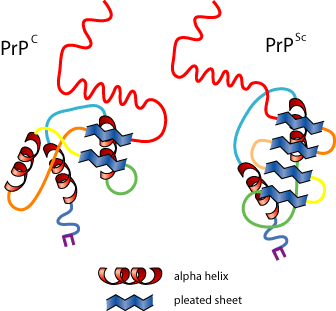
Prions (or proteinaceous infectious particle; on comes from analogy to virion) are the nasty little buggers responsible for disorders such as mad cow disease and other neurodegenerative diseases. They’re dangerous especially as they’re really hard to detect before symptoms appear. Now, according to Nature, scientists are trying to develop sensors that can detect prions by having them bind to a tiny ‘tuning fork’ that changes its tune when prions are present. This method promises a lot and it’s quite needed, as the current method costs a lot and it has a 31% chance of being correct. There is also a concern among doctors and scientists that a part of the population is infected with prions and there’s a disease outbreak just waiting to burst. Within the past years, numerous studies have been conducted with the goal of detecting prions, but results haven’t been great. Probably the best thing they did was to increase prion numbers from the blood of infected hamsters, so that they are easier to detect, and have found a resin that binds hamster prion proteins, allowing them to be physically removed from the blood. But this could not work in humans, so it’s still in the air.
So a team of biomedical engineers led by Harold Craighead at Cornell University in New York report on a different strategy for detecting prion presence: nanoscopic resonators. There are many advantages, including increased accuracy and the fact that once it’s perfected, the results will be offered immediately.
“The real challenge is going to be to build an automated device that can take blood from a cow in the field and give a rapid response as to whether prions are present,” says Craighead. “At the moment we only test cows when they fall over, but that is a late stage of the disease. It would be ideal to test cows a lot earlier. Resonators could be one path to doing this.”
“Since we can only detect prions reliably in the brains of dead people, having one more option available is definitely a good thing,” says neurologist Claudio Soto at the University of Texas Medical Branch in Galveston. “But the researchers need to improve sensitivity dramatically for this to work,” he says.
Nano-engineer Thomas Thundat at Oak Ridge National Laboratory, Tennessee, who was not involved with the work, says that shouldn’t be a problem: “Getting more sensitive readings depends on increasing the resonance frequency of these devices, which is a straightforward engineering task that we are more than ready to do. The results are very exciting,” he adds. “With this technology at hand we are now about two years away from having a prion detection solution.”









